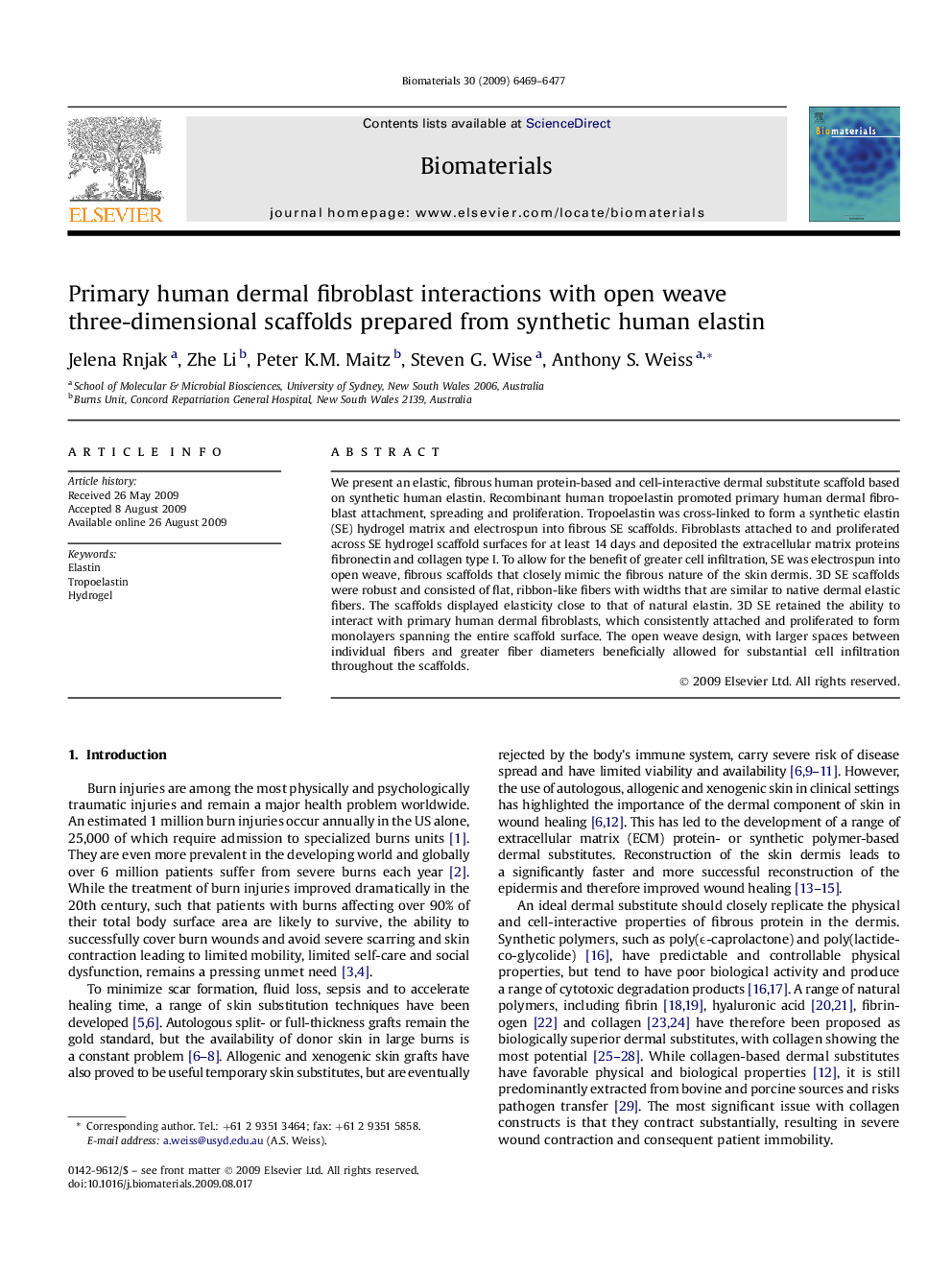| Article ID | Journal | Published Year | Pages | File Type |
|---|---|---|---|---|
| 10179 | Biomaterials | 2009 | 9 Pages |
We present an elastic, fibrous human protein-based and cell-interactive dermal substitute scaffold based on synthetic human elastin. Recombinant human tropoelastin promoted primary human dermal fibroblast attachment, spreading and proliferation. Tropoelastin was cross-linked to form a synthetic elastin (SE) hydrogel matrix and electrospun into fibrous SE scaffolds. Fibroblasts attached to and proliferated across SE hydrogel scaffold surfaces for at least 14 days and deposited the extracellular matrix proteins fibronectin and collagen type I. To allow for the benefit of greater cell infiltration, SE was electrospun into open weave, fibrous scaffolds that closely mimic the fibrous nature of the skin dermis. 3D SE scaffolds were robust and consisted of flat, ribbon-like fibers with widths that are similar to native dermal elastic fibers. The scaffolds displayed elasticity close to that of natural elastin. 3D SE retained the ability to interact with primary human dermal fibroblasts, which consistently attached and proliferated to form monolayers spanning the entire scaffold surface. The open weave design, with larger spaces between individual fibers and greater fiber diameters beneficially allowed for substantial cell infiltration throughout the scaffolds.
